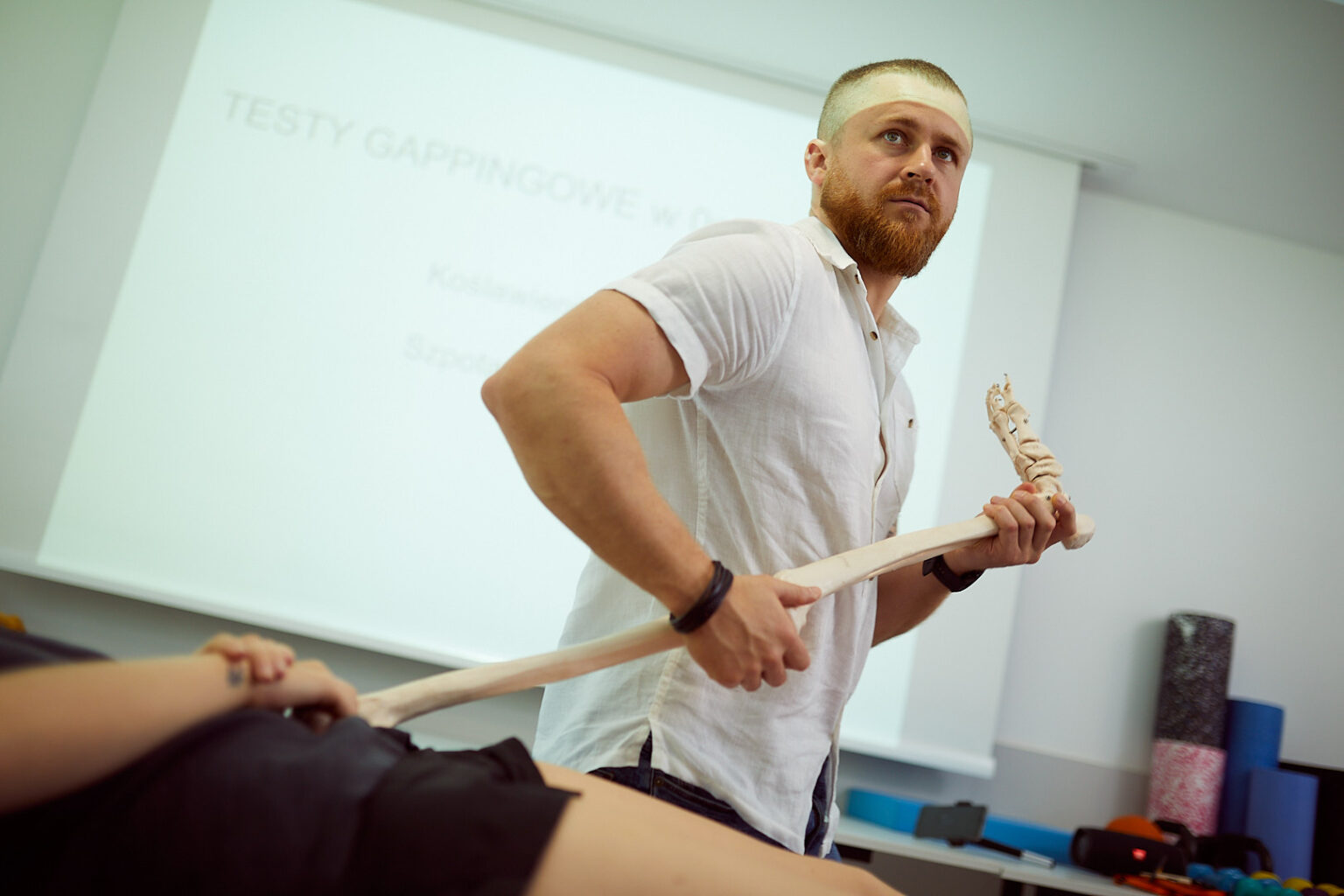During intensive manual therapy, using various therapeutic stimuli such as manual medicine, somatic therapy, psychosomatic therapy, breathing techniques, strain-counterstrain techniques,Dry Needling), manipulations, or work with fascia, significant processes occur in the body. These can trigger the so-called "burst" — a deep, temporary reorganization of body and mind lasting up to 72 hours after the procedure.
Mechanotransduction, the process of converting mechanical stimuli into biological signals, initiates adaptive responses that support tissue regeneration and structural adaptation (Khan et al., 2018). During this time, the body undergoes intense physiological and biochemical reorganization, which can cause physical and emotional responses: trembling, increased temperature, diarrhea, or flu-like weakness. These symptoms are the result of immune system activation and increased blood and lymph flow, supporting the body's detoxification process (Schleip et al., 2012).
What Is Burst in the Body
Burst in the body is a temporary state of intense reorganization and detoxification that occurs after therapeutic interventions such as manual medicine, fascial techniques, dry needling, or manipulations. Mechanotransduction — the process by which mechanical stimuli are converted into biological signals — triggers adaptive responses that support regeneration and tissue adaptation.
Symptoms and Course of Burst
During burst, patients may experience intense physical and emotional symptoms, such as:
- Muscle trembling - an effect of tension discharge
- Elevated body temperature – a result of immune system mobilization
- Diarrhea and other digestive reactions – an effect of intensive detoxification
- Flu-like weakness – a natural effect of reorganization and body unloading
These symptoms are linked to immune activation and increased blood and lymph flow, promoting cleansing and renewal processes.
Mechanotransduction – The Key to Regeneration During Burst
Mechanotransduction is the crucial process where the body converts mechanical stimuli, such as pressure or tension, into biological signals. During manual therapy, mechanical stimuli act on tissues, activating cellular-level adaptive processes. Mechanotransduction supports structural reorganization and improves tissue elasticity, helping the body adapt to new conditions. (Khan et al., 2018).
Why Is Mechanotransduction Important in the Burst Process?
Mechanotransduction triggers processes that help loosen accumulated tensions and promote detoxification. Mechanical stimuli provoke cellular responses that assist in tissue regeneration and structural adaptation. This process is especially important for patients with chronic tension, as it enables deep regeneration and the release of energy blocked by stress and trauma.

Breakdown and Chronic Defense Mechanism
Breakdown is not just a physiological reaction — it also helps relax chronic defense mechanisms that the body develops in response to prolonged stress and trauma..
Chronic defense is an adaptive mechanism,leading to persistent muscle tension and blocking full access to emotions and natural body responses.
How Burst Helps Reduce Chronic Defense?
During breakdown, mechanical stimuli and the mechanotransduction process support the organism in reducing tensions and blocks, enabling freer energy flow. Relaxing chronic defense improves the body's resilience to stress and supports deeper emotional access. This process helps patients rebuild physiological and emotional balance, contributing to overall well-being (van der Kolk, 2014; Ogden & Fisher, 2015).
GUR – General Adaptive Mechanisms of the Body
During the burst process, General Adaptive Mechanisms (GUR)are activated. They play a key role in helping the body adapt to new physiological and emotional conditions. GUR represents a complex set of bodily responses, including:
- Metabolic Adaptation changes in metabolism in response to detoxification and tissue reorganization.
- Nervous System Reorganization increased neuronal plasticity in response to mechanical and emotional stimuli.
- Hormonal Regulation activation of the HPA axis (hypothalamus-pituitary-adrenal axis), supporting hormonal balance during therapy-related stress.
These mechanisms not only support the body's healing processes but also help maintain long-term physiological balance.
The Role of Containment and Conscious Therapist Presence
The burst process, often accompanied by intense emotions and physical reactions, requires proper therapeutic support.
The therapist's key role is containment — creating a safe, conscious space where the patient can undergo body reorganization without fear.
How Containment Supports Healing?
Containment allows the therapist to accompany the patient in a supportive and conscious way, helping them understand that breakdown symptoms are part of the healing process and not a cause for concern. The therapist’s conscious presence enables patients to fully experience tremors, waves of warmth, and emotions. Such support promotes the integration of changes in the body and mind, facilitating the breaking of previous blockages and the restoration of balance.
Burst as a Deep Therapeutic Process
When supported by a conscious and empathetic therapeutic approach, burst stops being just a "crisis" after manual therapy. It becomes a deep therapeutic process, allowing patients to break emotional and physical blocks and restore the free flow of energy and emotions. This process helps achieve a higher state of harmony and balance.
Long-Term Benefits of Burst
The multifaceted burst process, supported by proper therapeutic techniques, leads to long-term physical and emotional benefits. Reducing chronic defense, improving tissue elasticity, and releasing blockages allow for fuller reactions to daily challenges. By reorganizing body structures, patients regain the ability for freer emotional expression and better stress management.Breakdown is an intense process but a key element of organism regeneration. With conscious therapeutic support and understanding of underlying mechanisms, patients can fully experience the benefits of this profound work, both physically and emotionally.
Rozwał w ciele to intensywny proces, który, choć może wydawać się wymagający, stanowi kluczowy element regeneracji organizmu. Świadome wsparcie terapeuty i zrozumienie mechanizmów zachodzących podczas terapii pozwalają pacjentowi w pełni doświadczyć korzyści z tej głębokiej pracy, zarówno na poziomie fizycznym, jak i emocjonalnym.
References
- Berceli, D. (2005). Trauma Releasing Exercises (TRE): A revolutionary new method for stress/trauma recovery. Wydawnictwo Trauma Recovery Services.
- Khan, K. M., & Scott, A. (2018). Mechanotransduction: the role of mechanical biology in healing and adaptation. Journal of Science and Medicine in Sport, 21(2), 123-129.
- Schleip, R., Findley, T. W., Chaitow, L., & Huijing, P. A. (2012). Fascia: The Tensional Network of the Human Body. Churchill Livingstone Elsevier.
- van der Kolk, B. A. (2014). The Body Keeps the Score: Brain, Mind, and Body in the Healing of Trauma. Viking Penguin.
- Ogden, P., & Fisher, J. (2015). Sensorimotor Psychotherapy: Interventions for Trauma and Attachment. W.W. Norton & Company.
- Porges, S. W. (2011). The Polyvagal Theory: Neurophysiological Foundations of Emotions, Attachment, Communication, and Self-Regulation. W.W. Norton & Company.
- Siegel, D. J. (2010). The Mindful Therapist: A Clinician’s Guide to Mindsight and Neural Integration. W.W. Norton & Company.
- Levine, P. A. (2010). In an Unspoken Voice: How the Body Releases Trauma and Restores Goodness. North Atlantic Books.
- Scaer, R. C. (2005). The Trauma Spectrum: Hidden Wounds and Human Resiliency. W.W. Norton & Company.
- Heller, D. P., & LaPierre, A. (2012). Healing Developmental Trauma: How Early Trauma Affects Self-Regulation, Self-Image, and the Capacity for Relationship. North Atlantic Books.
- Selye, H. (1956). The Stress of Life. McGraw-Hill. – Klasyczna pozycja opisująca Zespół Adaptacji Ogólnej (GAS), w której opisane są trzy fazy reakcji na stres: alarm, odporność i wyczerpanie.
- Solomon, E. P., & Heide, K. M. (2005). The Biology of Trauma: Implications for Treatment. Journal of Interpersonal Violence, 20(1), 51-60. – Artykuł opisujący fizjologiczne reakcje na traumę i stres oraz ich wpływ na ciało i procesy regeneracyjne.
- Findley, T. W., & Schleip, R. (2013). Fascia Research II: Basic Science and Implications for Conventional and Complementary Health Care. Elsevier Science. – Badania nad tkanką powięziową i jej rolą w mechanotransdukcji oraz procesach adaptacyjnych w ciele.
- McEwen, B. S. (2007). Physiology and neurobiology of stress and adaptation: Central role of the brain. Physiological Reviews, 87(3), 873-904. – Praca o wpływie stresu na organizm oraz adaptacyjnych mechanizmach mózgu i układu nerwowego.
- Bongers, P. M., & van den Heuvel, S. G. (2009). Physical Load as a Risk Factor for Musculoskeletal Disorders. Journal of Applied Physiology, 106(2), 583-588. – Badania nad obciążeniem fizycznym i reakcjami adaptacyjnymi ciała w odpowiedzi na różne rodzaje stresorów mechanicznych.

Dr n. med. i dr n. o zdr. Joanna Halska
Physiotherapist, somatic therapist, and trauma and mental resilience specialist. Author of the course ETER – Neuropsychobiological Fundamentals of Bodywork, which combines scientific knowledge with a deep understanding of neurobiological, physiological, and bioelectrical mechanisms crucial in trauma treatment. She helps patients reconnect with their bodies, release tensions, and develop awareness of defense mechanisms, fostering psychophysical balance, emotional tolerance, and trust in the body's innate wisdom. Read more...





